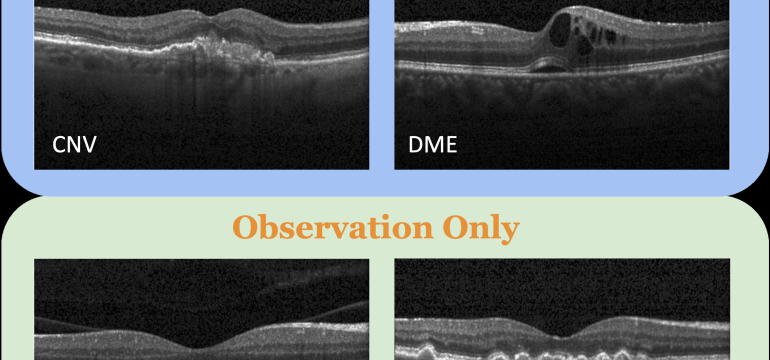Authors: Luffina C. Huang, Darren J. Chiu, Manish Mehta
Published on: April 15, 2024
Impact Score: 7.4
Arxiv code: Arxiv:2404.10166
Summary
- What is new: The proposed Self-Supervised Learning (SSL) model achieves state-of-the-art accuracy in classifying treatable retinal diseases using small-scale Optical Coherence Tomography (OCT) images, outperforming existing Transfer Learning (TL) models.
- Why this is important: Automated medical diagnosis with image-based neural networks faces challenges due to scarce medical images and high labor costs for annotation.
- What the research proposes: The research introduces a Self-Supervised Learning model that effectively classifies retinal diseases from OCT images, even with limited training data and imbalanced datasets.
- Results: The SSL model reached a 98.84% accuracy rate using only 4,000 training images and demonstrated superior performance over TL models, particularly under imbalanced conditions and with smaller datasets.
Technical Details
Technological frameworks used: SSL with MoCo-v2 scheme
Models used: Four pretrained SSL models and two TL models
Data used: Small-scale OCT images ranging from 125 to 4000
Potential Impact
Healthcare technology companies focusing on medical imaging and diagnosis could significantly benefit from these insights, particularly those developing or using automated image-based diagnosis systems.
Want to implement this idea in a business?
We have generated a startup concept here: VisionaryAI.




Leave a Reply